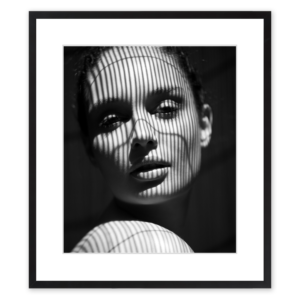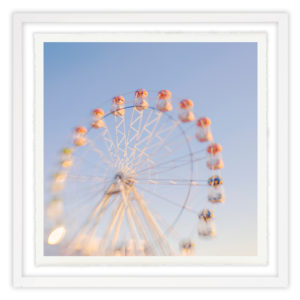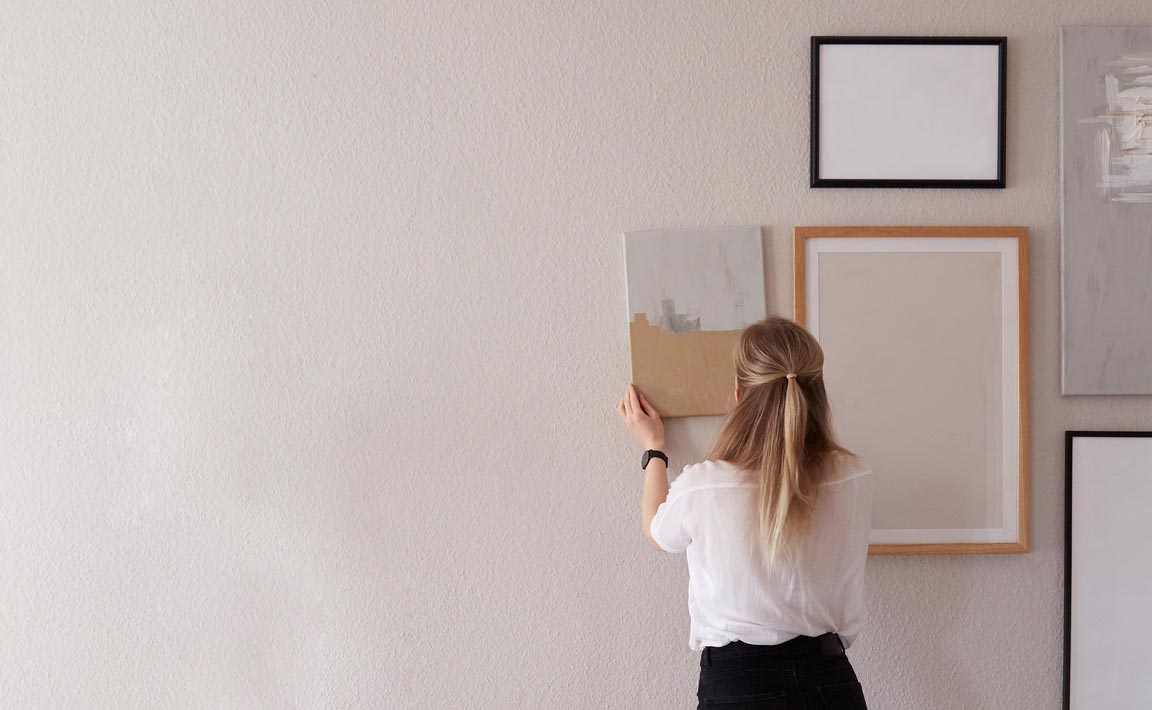
02/17/2024
by Ashley Garner
Studio Assistant, Tribeca Printworks
Framing your art and photography can transform a space and transform your work. The process can seem daunting and the possibilities endless, but we’re here to help simplify and shed some light on the ins and outs of custom framing. You can click on the following links to read more about our Custom Framing and our Fine Art Printing practices.
Ready-Made vs Handmade Picture Frames
One of the first decisions you have to make during the framing process is whether to choose a ready-made or custom frame. Ready-made or store-bought frames usually come in set sizes such as 4 inches by 6 inches, 5 inches by 7 inches, 8 inches by 10 inches, or 16 inches by 20 inches. With these types of frames, you’ll typically spend less but also have fewer material and finish options. If your artwork doesn’t fit inside or the frame doesn’t quite match your style, you’ll have to forgo framing your artwork.
Because custom frames are made to your specifications, you have more options for framing fine art prints. When you have an untraditional-sized print, photo or other piece of artwork, you can request a custom frame that’s sized, cut and mounted to your specific needs. From floater frames to contemporary gallery frames, you can display your artwork exactly how you’d like. You also won’t have any limitations when it comes to material and finish options. So, whatever your size or style specifications, custom frames provide you with endless creativity and capabilities.
Where is the Frame Going to be Viewed?
Artwork wants to be on the wall. The purpose and location of your framed artwork and photography is going to greatly inform your decision on how you want the work framed.
If you are framing work for an exhibition, gallery, or art fair, chances are you are also framing work for the purpose of sale. If your framed work is available for purchase, I find that the best practice is to keep it simple and keep it contemporary. You do not want to alienate or exclude anyone from envisioning your work in their home because the framing does not match their aesthetic. You also want to avoid overshadowing your work with decadent framing. Stick to narrow frames, neutral colors (black, white, natural wood), and simple framing treatments.
If the framed print or original is going in your home, then the style is up to you! If you’re unsure what exactly your style is, consulting with a custom framer or interior designer is highly recommended. Perhaps you want to fill that entire space above your couch with one large statement piece? Maybe you’re thinking of combining several smaller pieces in a gallery wall treatment? Envision the space you want to fill and trust your instincts!
Framing is More Than Uniting a Print With a Frame
The possibilities and combinations are truly endless. Here are some common framing treatments offered to enhance and elevate your work:
Mat and Frame:
Simply adding a mat can completely transform your work. It is one of the most common and classic ways to add dimension and class to any print. Mat widths can be customized to fit any work, but you’ll want to make sure the mat is always wider than the frame itself. When adding mats to large works, you will want to consider the overall proportion, but it can also be fun to play around with ultra-wide mats on smaller works. Matting is generally available in 4-ply or 8-ply depths and can be stacked with multiple “windows” if you want to play around with dimension.
 Float-Mount:
Float-Mount:
Most prints and works on paper are flat and lightweight enough to be float-mounted within a frame. To achieve a float-mount, the print or work is adhered to a dimensional substrate (i.e. foamboard or matboard). The substrate is then adhered to a backing board larger than the work itself. This both creates the effect that the print is floating and a “reveal” between the edge of the print and the frame. This is a great option
for works with raw edges or anything with “object” quality. This treatment is often achieved in Shadow Box frames which allows for the depth required because they are deeper than most traditional frames.
Straight-Fit:
Sometimes a mat can seem too traditional and float-mounting doesn’t feel appropriate, in which case I recommend letting the work speak for itself! Straight-fit just means framing a print or work, edge-to-edge, inside a frame and in some cases that is all you need.
Preservation is Key
Your prints and originals are precious, not only in sentiment but also in material, and need to be treated as such. When framing your work, it is important to consider the materials that are used in the process. If you are investing in framing for works to go in your homes, chances are you would like them to last. If you are selling framed artwork and prints, the quality of the materials used are going to reflect on you as an artist and craftsperson as well as determine the value of the work.
You’ll want to start by making sure all materials (i.e. matting, backing boards, etc.) involved in the framing process are acid-free and archival. This will ensure that they will not decay or yellow overtime, along with your prints. If you know the frame will ultimately be hung in a place where it is exposed to lots of sunlight, make sure the glass or acrylic used has UV protective qualities. At Tribeca Printworks, we frame with acrylic because it is lightweight, shatterproof, and incredibly durable.
Choose the Right Frame Finish & Treatment
If you are in the New York City area, we’d love for you to come drop into our SOHO studio and take a look at samples of our frames and treatments. For those not local to NYC or unable to make it in you can learn more about our custom framing treatments, or upload your image on our website and play with our preview feature to see what frame works best for your work! If you have any questions about which treatment is right for you or just want to set up a consultation, give us a call today! With our one-stop shop experience, we help you simplify the custom framing process from start to finish.
Ready to get started? Order Now!
What Is The best Way To Print My Art and Photography?
How should I print my photos and artwork? You’ve come to the point in your artistic career where you’re ready to take it to the next level and start printing your work. Perhaps it is exporting those photos off your camera for the first time…READ MORE
by Ashley Garner 04/17/2020
How Big Can I Print My Photos and Artwork?
So you want to print an image off of your phone, your DSLR, or *gasp* the internet! Maybe you’re trying to reproduce your original artwork? Your first question will most likely be, how big can I print this file? When faced with this question, we often respond with “how large is large for you?…READ MORE

